
The 2025 NFL Draft has come and gone, which means that fantasy drafts are just around the corner. For those of you who are dynasty managers or best ball enthusiasts, you’ve likely started diving into drafts for the 2025 season already. It’s good to be back.
The return of drafts means a triumphant return for everybody’s favorite article: the ADP rumblings. As always, the ADP rumblings will examine the biggest movers, values, or reaches based on Underdog’s current ADP.
Drafting on Underdog just started Monday, so the ADP data we have is in the early stages and a real look at how people view the landing spots from the NFL draft. Things will change quickly as we go through the summer.
For this first article, let’s dive into some of the rookie class’s ADP on Underdog Fantasy.
Fantasy Football ADP Rumblings (5/1)
Quarterback
Cam Ward, Tennessee Titans
ADP: 153.6, QB23
Miami’s Cam Ward was the only top-10 quarterback in this class, but he is currently being drafted as the QB23 in early best-ball drafts.
Ward completed 67.2% of his passes for 4,313 yards and 39 touchdowns and seven interceptions during his final season. He posted the highest PFF grade among the 2025 quarterback class (92.5) and had the third-highest big-time throw rate (5.9%). His blend of arm talent and improvisational ability elevated him to the first overall pick.

Not only was Ward a solid passer, but he also had the kind of functional mobility (17 rushing touchdowns in his final three seasons) to provide some fantasy scoring as a runner.
He instantly becomes the starting quarterback on a team that spent the offseason building up their offensive line (Dan Moore Jr. and Kevin Zeitler) and receiving corps (veterans Van Jefferson and Tyler Lockett with rookies Elic Ayomanor and Chimere Dike).
Ward will likely climb the ranks throughout the summer as fantasy managers gain confidence in his fit in Brian Callahan’s offensive system. Drafting him at QB23 now could provide solid value for early drafters.
Tyler Shough, New Orleans Saints
ADP: 239.4, QB39
The 2025 quarterback class wasn’t very talented and had few great landing spots. One player who did land well was Louisville’s Tyler Shough.
Shough entered college in 2018 as a backup to Justin Herbert at Oregon. What followed was a career mired with season-ending injuries and inconsistent play. His collegiate season at Louisville (62.7% completion percentage for 3,195 yards and 23 touchdowns and six interceptions) flashed enough of his talent to get him drafted in the second round to the New Orleans Saints.
Shough’s film is far from perfect, but he landed with a team that could start him for the majority of the 2025 season. Derek Carr may miss the whole year with a shoulder injury and 2024 fifth-round pick Spencer Rattler did little to inspire confidence during his rookie season.
There are plenty of ways for Shough to fail, but he is currently free in fantasy drafts and would enter an offense with pass-catching weapons like Chris Olave and Alvin Kamara, with Rashid Shaheed joining the fray when he recovers from his ACL tear.
Nobody will be drafting Shough as their lead quarterback, but he is worth taking a swing in the final round of three quarterback builds that load up on skill positions early in drafts.


Running Back
Ashton Jeanty, Las Vegas Raiders
ADP: 9.7, RB4
It took no time for early drafters to elevate Ashton Jeanty to the first round. The running back, who was selected with the sixth overall pick by the Raiders, is currently going off the board with the ninth pick of the first round.
The thing is, it may not be high enough.

Jeanty handled 374 carries for 2,601 yards and 29 touchdowns in his final collegiate season and made a serious threat to the single-season rushing record set by Barry Sanders (2,628 yards). The Boise State product generated more yards after contact (1,695) than the next closest rusher had in total yards (1,660). He also showed his acumen as a receiver in 2023 (43 receptions for 569 yards and five touchdowns).
The reason to believe that Jeanty can hit his lofty expectations (aside from his talent) has a lot to do with his coach, Pete Carroll. Carroll loves to establish the run and has no problem funneling the work to one player.
During his 14 years in Seattle, Carroll had a running back handle at least 250 carries three times. He had a running back receive 40-plus targets twice. On four different occasions, the back hit both thresholds in the same season. A lot of that will be attributed to Marshawn Lynch, but these thresholds were also hit by a seventh-round pick (Chris Carson) on multiple occasions.
There isn’t much room for Jeanty to climb in fantasy drafts, but it is completely justifiable to take him within the top five of fantasy drafts.
RJ Harvey, Denver Broncos
ADP: 74.4, RB24
If you’re active on social media, you’ve probably seen numerous fantasy analysts starting to hype up UCF running back RJ Harvey. Harvey logged 458 carries for 2,993 yards and 38 touchdowns with 39 receptions for 505 yards and four receiving scores during his final two seasons at Central Florida. The hype was starting to build after measuring in at 5-foot-8 and 205 pounds while running a 4.40 40-yard dash at the combine.
Then Harvey got second-round draft capital in one of the best landing spots of the offseason (Denver Broncos). Because of his production, athleticism and landing spot, Harvey is coming off the board as the RB24 in early best ball drafts.
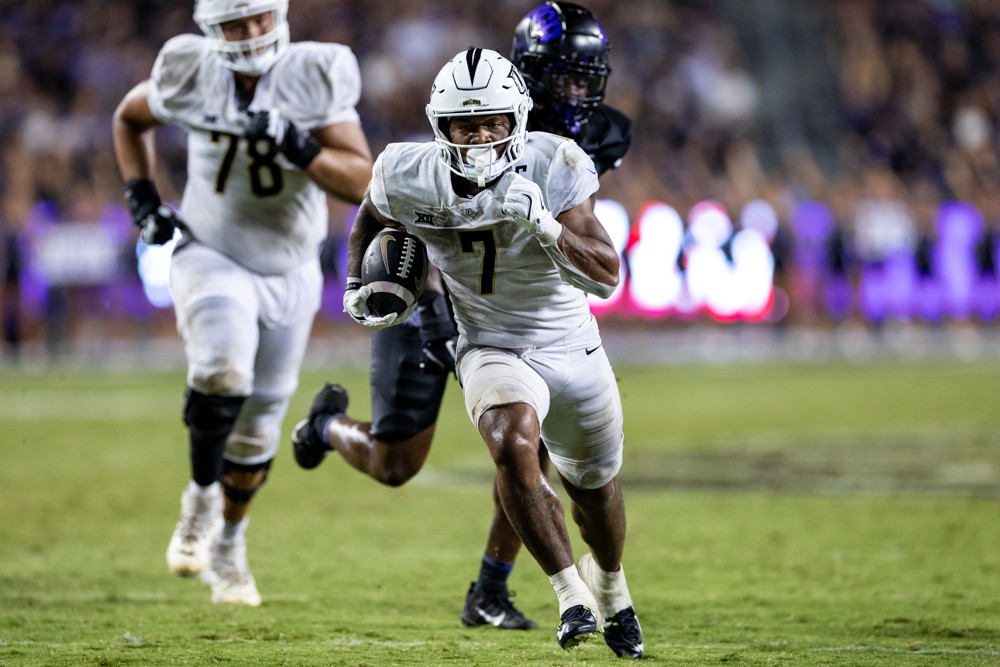
But the hype may have gone too far with this one.
While the Broncos are a fantastic landing spot, it is worth noting that Sean Payton notoriously splits his backfield between numerous running backs who play a variety of roles. Below is a breakdown of his team’s backfields over his 17 years as a head coach.
Payton gets a lot of credit for producing top 12 fantasy seasons, but it is worth noting that most of that can be attributed to two Heisman winners (Reggie Bush and Mark Ingram II) and one of the greatest receiving backs of all time (Alvin Kamara). There have been just six seasons where a single running back has handled at least 40% of the team’s carries with a 10%-plus target share.
Can Harvey have an excellent season as a rookie? Absolutely.
However, drafting Harvey as the RB24 in fantasy drafts in the sixth round feels like drafting him at his absolute ceiling. Especially on a team that returns two players who had roles in 2024 (Jaleel McLaughlin and Audric Estime) and a mobile quarterback (Bo Nix).
Devin Neal, New Orleans Saints
ADP: 167.4, RB52
If you are looking for a sleeper running back in the later rounds, a good player to take is Saints rookie Devin Neal.
Neal, a 2025 sixth-round pick, was highly productive during his career at Kansas. Over his final three seasons he averaged 201 carries, 1,212 rushing yards (6.0 yards per carry) and 14 touchdowns per season while adding 23 receptions for 218 yards and a receiving touchdown.
The rookie looked like an explosive weapon out of the backfield on film but ran a disappointing 4.58 40-yard dash at the combine that tanked his draft stock.
While the draft capital isn’t stellar, Neal joins a team with a new coaching staff and very little on the depth chart behind Alvin Kamara. The rookie won’t lead the backfield, but he has very little competition to carve out a role in his first season.
Neal is currently being drafted as the RB52, but he could have a share of the backfield touches to start his career and has the rushing and receiving ability to lead New Orleans’ rushing attack if Kamara were to get hurt.
Wide Receiver
Tetairoa McMillan, Carolina Panthers
ADP: 44.2, WR24
There wasn’t a more polarizing wide receiver prospect in 2025 than Arizona’s Tetairoa McMillan. Many questioned his speed and love of the game. Others pointed to his size (6-foot-4, 219 pounds) and excellent production in college (213 receptions for 3,423 yards and 26 touchdowns) as evidence that he was one of the few (only) receivers in the class capable of being a WR1.

It will take time before we know who was right and wrong, but we do know that at least one team (Carolina) viewed him as a wide receiver worth drafting in the top 10.
McMillan now lands on a Panthers depth chart starving for an alpha producer in the receiving corps. The Panthers didn’t have a single receiver earn over 84 targets, 49 receptions, 615 yards or five receiving touchdowns in 2024. Despite that, Bryce Young showed promise to close out his second season (after getting benched earlier in the year), giving the team optimism going forward.
McMillan instantly becomes the most talented receiver in Carolina capable of being Young’s primary read. He will be operating as the lead receiver in an ascending offense led by a smart offensive mind (Dave Canales) and a quarterback who finished 2024 on a high note.
Given the lack of target competition and his potential role, McMillan is a justifiable selection at his WR24 price.
Travis Hunter, Jacksonville Jaguars
ADP: 50.7, WR28
Travis Hunter will be one of the most polarizing players in fantasy football in 2025 (unless you play in IDP leagues). The 2025 Heisman winner was arguably the top wide receiver and cornerback prospect in the class and was drafted second overall by the Jaguars, who moved a haul of draft capital for him.
Hunter played both ways throughout his college career and has frequently been mentioned as a wide receiver prospect by the Jaguars. If he was solely a wide receiver prospect, his WR28 draft capital would be a steal. Hunter also won the Biletnikoff Award (the best college wide receiver) in 2024 thanks to 96 receptions for 1,258 yards and 15 touchdowns.

The problem is we just don’t know what his role looks like at the NFL level. Hunter will undoubtedly play both sides of the ball with his new team.
Further complicating things is that Hunter has legitimate target competition in the form of 2024 first-round pick Brian Thomas Jr. The LSU product is fresh off a season that saw him catch 87 of 133 targets for 1,282 yards and 10 touchdowns.
Ultimately, Hunter’s ADP will remain suppressed throughout the drafting season due to all the reasons listed above.
Given that he was arguably the best wide receiver prospect in the class due to his ball skills and ability to manufacture big plays after the catch, his ADP is a risk worth taking, especially if you can add him as the WR3 or WR4 in your lineup.
Tre Harris, Los Angeles Chargers
ADP: 120.5, WR58
The Chargers added a second-round wide receiver to their offense for a second straight season after drafting Ole Miss wide receiver Tre Harris with the 23rd pick in the second round.
Harris is coming off a season that saw him catch 60 passes for 1,030 yards and seven touchdowns in just eight games played. He posted three consecutive seasons between Ole Miss and Louisiana Tech with at least 54 receptions, 935 receiving yards, and seven touchdowns.
Many will point to Ole Miss’ schemed-up offense as a reason for Harris’ success at the collegiate level, but on film he shows solid route running skills and the ability to use his body to shield off defenders for contested catches. Frequently he can be seen pulling away after the catch from SEC competition, suggesting he may have some more speed than his 4.50 40-yard dash suggests.
Ladd McConkey will undoubtedly be the primary receiving option for the Chargers in 2025 after a stellar rookie season, but Harris should easily step into a role as Los Angeles’ top outside receiver as a rookie. The Chargers were looking for more stability in the passing attack after another uneven season from Quentin Johnston and the departure of Joshua Palmer in free agency.
Harris is being drafted in the 12th round (WR58) in early best-ball drafts. That ADP could be an extreme discount if he’s able to carve out a starting role in training camp as a rookie.
Tight End
Tyler Warren, Indianapolis Colts
ADP 105.9, TE8
Tyler Warren got the ideal landing spot for many when he was selected 14th overall by the Indianapolis Colts. This was coming off a fantastic final season with Penn State that saw him emerge as the team’s offensive focal point with 104 receptions for 1,233 yards and eight touchdowns. He also handled 26 carries for 218 yards and four rushing scores.
The Colts have been searching for a trustworthy tight end for years and as a result, Warren’s ADP has skyrocketed to the TE8 in fantasy drafts. That feels lofty for a player coming off a career-best season as a fifth-year senior who is now competing for targets in a passing attack that features three second-round wide receivers (Michael Pittman Jr., Alec Pierce and Adonai Mitchell) and a third-round receiver who has been productive when healthy (Josh Downs).
Combine that with the Colts’ run-heavy identity and a quarterback room with inconsistent passers like Anthony Richardson Sr. and Daniel Jones and you may have a player whose NFL role is better than his fantasy role as a rookie.
Mason Taylor, New York Jets
ADP: 199.2, TE27
Mason Taylor was getting some late first-round hype heading into the NFL draft but ultimately settled into the second round where he was selected by the New York Jets.
Taylor wasn’t the most productive player at LSU (129 receptions for 1,308 yards and six touchdowns in three seasons) but is seen as a player with plenty of potential due to his NFL bloodlines and the athletic ability to function as a “move tight end at the NFL level.”
The Jets opted to draft Taylor over wide receivers (another clear need), which suggests they view him as being a player who can contribute to their passing attack with Justin Fields. Taylor won’t overtake Garrett Wilson as the team’s primary target, but he could easily compete for second in the pecking order over players like Josh Reynolds, Allen Lazard, Tyler Johnson and Malachi Corley.
At the very least he should have no problem winning the tight-end job from the likes of Jeremy Ruckert or Stone Smartt. Simply being on the field will allow him to earn targets.
Taylor is currently being drafted as the TE27, but he has a path to being the second-highest target earner on the Jets in his first season. That is a gamble worth making in the last rounds of your fantasy draft.








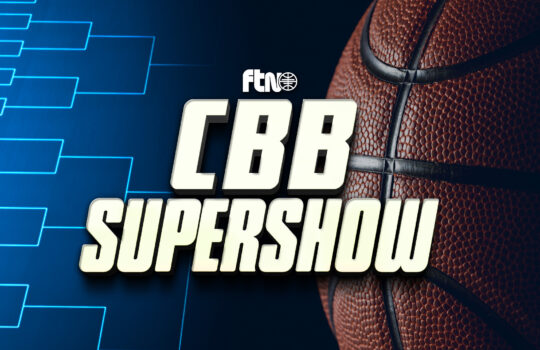




















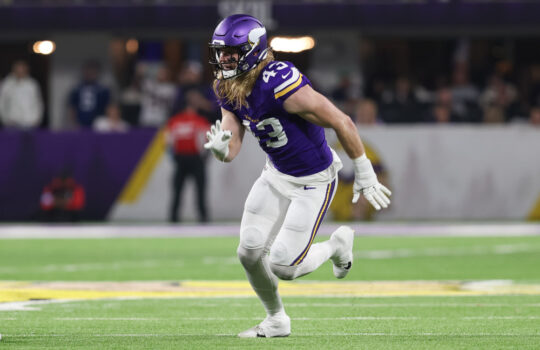



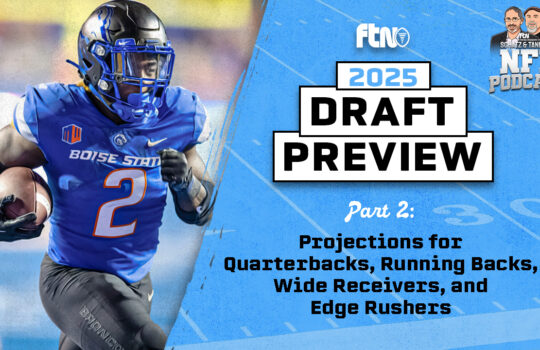

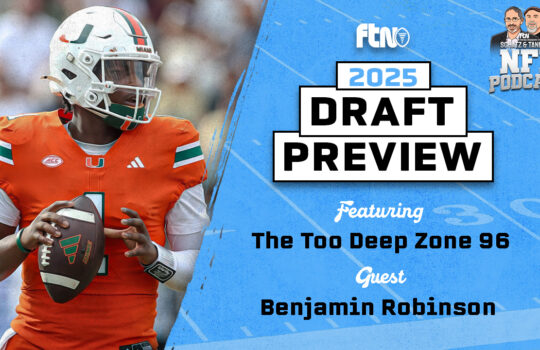
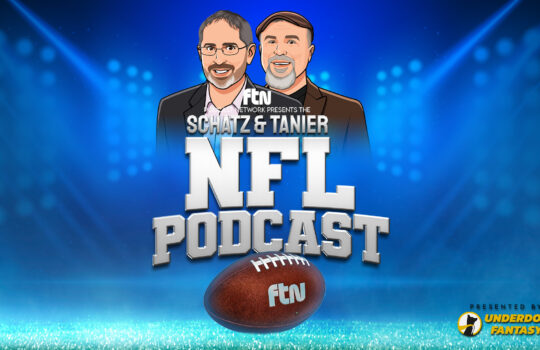








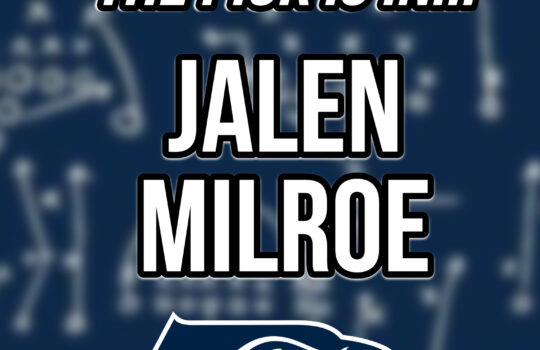

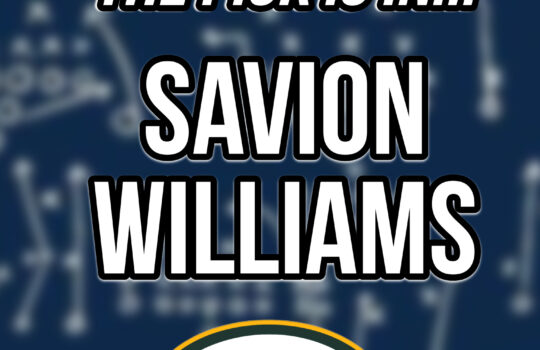


 New York Jets
New York Jets  New England Patriots
New England Patriots 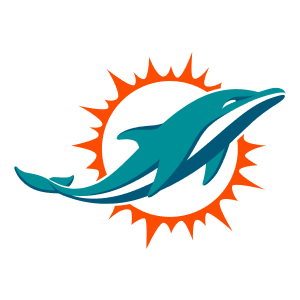 Miami Dolphins
Miami Dolphins  Buffalo Bills
Buffalo Bills  Pittsburgh Steelers
Pittsburgh Steelers  Cleveland Browns
Cleveland Browns  Cincinnati Bengals
Cincinnati Bengals  Baltimore Ravens
Baltimore Ravens 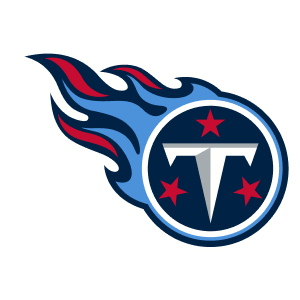 Tennessee Titans
Tennessee Titans  Jacksonville Jaguars
Jacksonville Jaguars  Indianapolis Colts
Indianapolis Colts  Houston Texans
Houston Texans  Las Vegas Raiders
Las Vegas Raiders  Los Angeles Chargers
Los Angeles Chargers  Kansas City Chiefs
Kansas City Chiefs  Denver Broncos
Denver Broncos  Washington Commanders
Washington Commanders  Philadelphia Eagles
Philadelphia Eagles 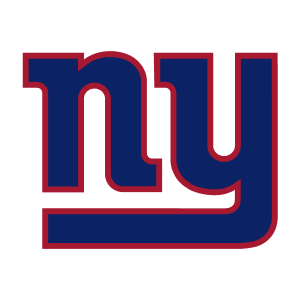 New York Giants
New York Giants  Dallas Cowboys
Dallas Cowboys  Minnesota Vikings
Minnesota Vikings  Green Bay Packers
Green Bay Packers 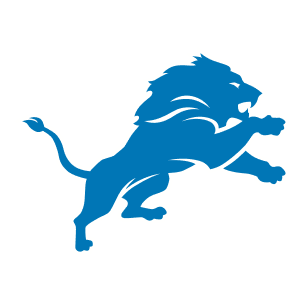 Detroit Lions
Detroit Lions  Chicago Bears
Chicago Bears 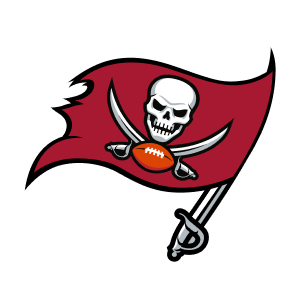 Tampa Bay Buccaneers
Tampa Bay Buccaneers  New Orleans Saints
New Orleans Saints 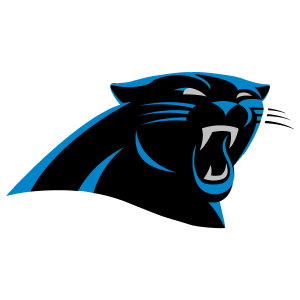 Carolina Panthers
Carolina Panthers 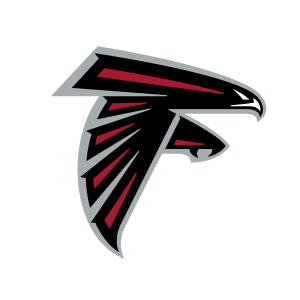 Atlanta Falcons
Atlanta Falcons  San Francisco 49ers
San Francisco 49ers  Seattle Seahawks
Seattle Seahawks  Los Angeles Rams
Los Angeles Rams  Arizona Cardinals
Arizona Cardinals 

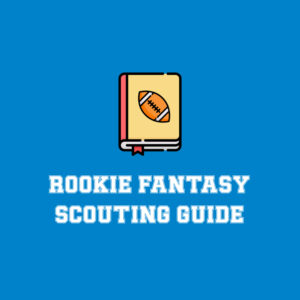






 Boston Celtics
Boston Celtics  Brooklyn Nets
Brooklyn Nets  Philadelphia 76ers
Philadelphia 76ers  New York Knicks
New York Knicks  Toronto Raptors
Toronto Raptors  Chicago Bulls
Chicago Bulls  Detroit Pistons
Detroit Pistons  Milwaukee Bucks
Milwaukee Bucks  Cleveland Cavaliers
Cleveland Cavaliers  Indiana Pacers
Indiana Pacers  Orlando Magic
Orlando Magic 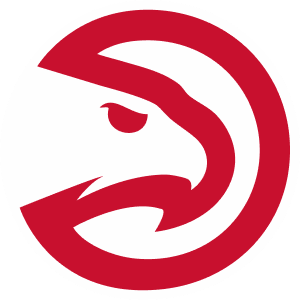 Atlanta Hawks
Atlanta Hawks  Charlotte Hornets
Charlotte Hornets  Miami Heat
Miami Heat  Washington Wizards
Washington Wizards  Denver Nuggets
Denver Nuggets  Minnesota Timberwolves
Minnesota Timberwolves  Oklahoma City Thunder
Oklahoma City Thunder  Portland Trail Blazers
Portland Trail Blazers  Utah Jazz
Utah Jazz  LA Clippers
LA Clippers  Golden State Warriors
Golden State Warriors  Los Angeles Lakers
Los Angeles Lakers  Phoenix Suns
Phoenix Suns  Sacramento Kings
Sacramento Kings  Dallas Mavericks
Dallas Mavericks  Houston Rockets
Houston Rockets  Memphis Grizzlies
Memphis Grizzlies  New Orleans Pelicans
New Orleans Pelicans  San Antonio Spurs
San Antonio Spurs 













